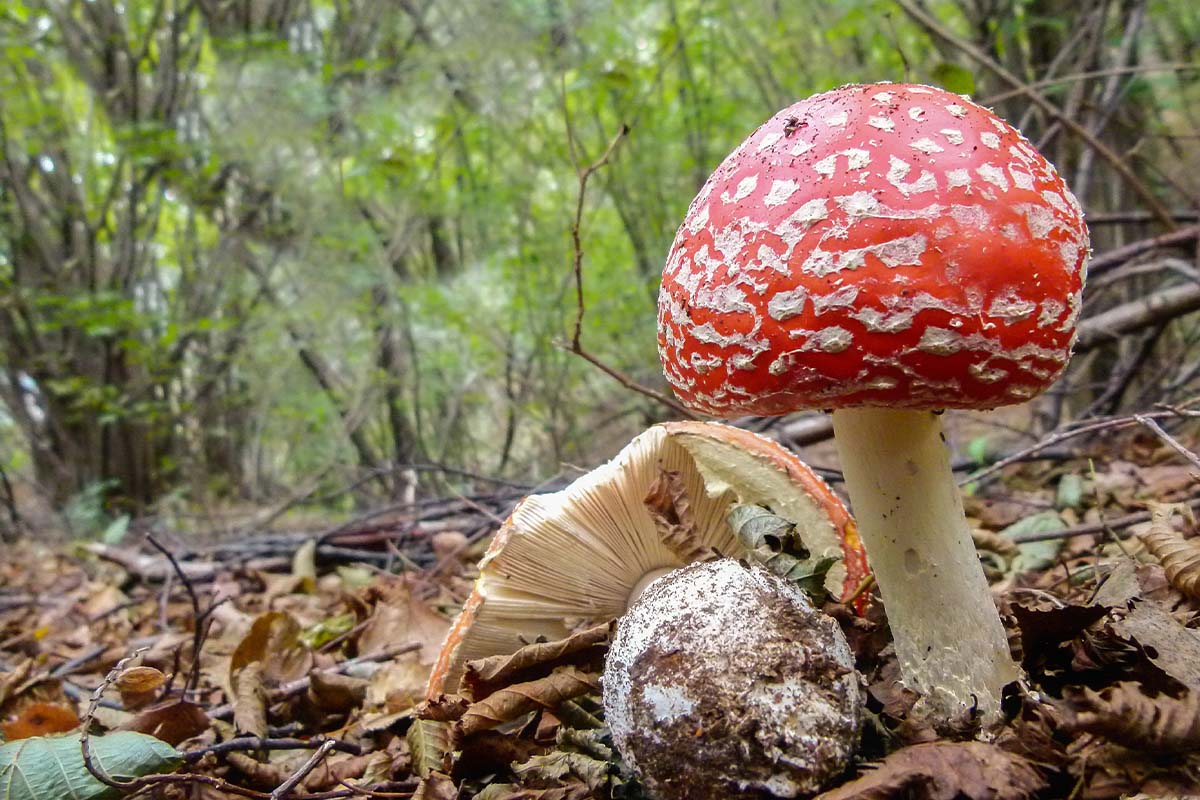Posted by Trusted Mushrooms on 10th Apr 2023
Amanita Mushrooms and Muscimol: An In-Depth Exploration
Introduction To Amanita and Muscimol
Mushrooms have long captivated the curiosity of humans, and among the most enigmatic of all fungi are the Amanita mushrooms. Renowned for their unique appearance and intriguing properties, Amanita mushrooms have found a place in various cultural, historical, and traditional practices across the globe. In this comprehensive guide, we will journey into the world of Amanita mushrooms, with a specific emphasis on the compound muscimol, which plays a key role in the properties of these mushrooms. We will explore the biology, history, and traditional uses of these mushrooms while providing a balanced perspective on their significance. Please note that this article is for informational purposes only and does not offer medical advice or discuss the effects of mushrooms.
Biology of Amanita Mushrooms

Amanita mushrooms belong to the genus Amanita, a diverse group that encompasses over 600 species of fungi. These mushrooms are easily recognizable by their umbrella-shaped caps, which exhibit a range of colors from white to vibrant red. A distinctive feature of Amanita mushrooms is the presence of a universal veil, which initially envelops the entire mushroom and later ruptures to leave remnants on the cap and a ring (annulus) on the stem. Additionally, many Amanita species have a bulbous base with a volva, a cup-like structure at the base of the stem.
Muscimol: A Key Compound in Amanita Mushrooms
Muscimol is an organic compound found in several species of Amanita mushrooms, most notably in Amanita muscaria, commonly known as the fly agaric. This compound is considered to be the primary psychoactive component in these mushrooms and has been the subject of scientific research and cultural interest.
Traditional and Cultural Significance of Amanita Mushrooms
Amanita mushrooms, particularly Amanita muscaria, have a rich history of cultural and traditional significance. The vibrant red and white appearance of Amanita muscaria has made it an iconic symbol in folklore, art, and literature. For instance, it is often depicted in illustrations of fairy tales and fantasy worlds.
In some indigenous cultures, Amanita muscaria has been used in shamanic and spiritual practices. The use of these mushrooms in such contexts is deeply rooted in the beliefs and customs of the respective cultures. It is important to approach this topic with cultural sensitivity and respect for traditional knowledge.
While Amanita muscaria is the most well-known species within the genus, other species of Amanita mushrooms have also been utilized for various purposes. For example, Amanita caesarea, known as Caesar's mushroom, has been prized as an edible delicacy since ancient times.
Safety Considerations and Responsible Use
While Amanita mushrooms have cultural and historical significance, it is crucial to exercise caution and responsibility when it comes to their use. Some species of Amanita mushrooms, such as Amanita phalloides (death cap) and Amanita virosa (destroying angel), are highly toxic and can be fatal if ingested. Proper identification is essential to avoid confusion with toxic species.
Muscimol-containing species, such as Amanita muscaria, are classified as psychoactive, and their use may result in altered perception and cognition. The effects of muscimol can vary widely among individuals, and factors such as dosage, preparation, and individual sensitivity play a role in the experience.
It is important to note that the use of Amanita mushrooms may be subject to legal restrictions in some regions. Individuals are encouraged to familiarize themselves with local regulations and to make informed decisions.
Conclusions on Amanita and Muscimol
Amanita mushrooms are a fascinating group of fungi that have captured the imagination of people throughout history. From their striking appearance to their cultural and traditional significance, these mushrooms hold a unique place in the world of mycology. Muscimol, a key compound found in certain Amanita species, contributes to the intriguing properties of these mushrooms.
![]()
As we have explored in this article, Amanita mushrooms have been used in various cultural contexts and have been the subject of scientific research. However, it is essential to approach these mushrooms with a sense of responsibility and respect for their potential effects. Proper identification and adherence to safety guidelines are paramount to ensure a safe and informed interaction with these fungi.
In conclusion, Amanita mushrooms and muscimol offer a window into the diverse and complex world of fungi. Through a deeper understanding of their biology, history, and traditional uses, we can appreciate the multifaceted nature of these remarkable organisms. Whether you are a mycology enthusiast, a student of cultural practices, or simply curious about the natural world, we hope that this comprehensive guide has provided valuable insights into the captivating world of Amanita mushrooms.
References and Sources:
- Tulloss, R. E., & Bhandary, H. R. (1992). Amanita. In The Fungi: An Advanced Treatise (Vol. 1, pp. 35-70). Academic Press.
- Michelot, D., & Melendez-Howell, L. M. (2003). Amanita muscaria: chemistry, biology, toxicology, and ethnomycology. Mycological Research, 107(2), 131-146.
- Wasson, R. G. (1968). Soma: Divine Mushroom of Immortality. Harcourt Brace Jovanovich.
- Lurie, Y., Wasser, S. P., Taha, M., Shehade, H., & Nijim, J. (2009). Amanita muscaria and Amanita pantherina poisoning: two syndromes. Toxicon, 54(6), 889-892.
- Trusted Mushrooms. (n.d.). Amanita Mushrooms. Retrieved from https://www.trustedmushrooms.com/amanita-mushrooms (Accessed: September 2021).
Disclaimer: This article is for informational purposes only and does not offer medical advice or endorse the use of Amanita mushrooms or any other substances. The use of Amanita mushrooms may be subject to legal restrictions in some regions. Always exercise caution and consult with knowledgeable experts before using any mushrooms or other substances.
